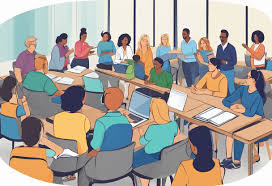In the modern educational landscape, the traditional teacher is no longer the sole purveyor of knowledge in the classroom. Increasingly, they are joined by digital allies in the form of thoughtfully selected kids animated shows that serve as supplementary instructors, delivering educational content through engaging visual narratives. This partnership between human educators and animated content represents a significant evolution in teaching methodology, one that acknowledges both the changing media environment children inhabit and the diverse learning needs present in every classroom.
The strategic incorporation of kids animated shows into educational settings reflects a recognition that screens, when displaying quality content, can function as effective co-teachers rather than distractions. These animated programs often present complex information through character-driven narratives and visually compelling sequences that capture children’s attention while simultaneously delivering substantial educational content. Far from replacing human teachers, these digital resources extend their reach, providing consistent, repeatable explanations of concepts that students can revisit as needed.
The historical trajectory of educational animation reveals its deep roots in pedagogical practice. From the early educational films of the 1940s to today’s sophisticated animated series, educators have long recognized the value of visual storytelling in the learning process. The difference today lies in accessibility and integration—modern teachers can seamlessly incorporate short animated segments into lessons, pausing for discussion, rewinding for clarification, or assigning specific episodes for review at home.
Neuroscience research supports the effectiveness of animation as a teaching tool, particularly for developing brains. Studies have shown that the combination of visual imagery, movement, narrative, and sound activates multiple areas of the brain simultaneously, creating stronger neural connections and improving retention. When children watch educational animation, their brains process information through both verbal and visual channels, creating redundant pathways that make information more accessible during recall.
The accessibility advantages of animated educational content are particularly significant for diverse learners. Children with different learning styles, abilities, and language backgrounds can often access the same content through animation, making it an important tool for inclusive education. Visual learners benefit from the imagery, auditory learners from the dialogue and narration, and the engaging narratives help sustain attention for students who might struggle with focus in traditional instructional settings.
Curriculum alignment has become increasingly sophisticated as educational animation has evolved. Many contemporary kids animated shows are explicitly designed to support specific learning standards, with educational consultants ensuring that content aligns with grade-level expectations across subjects. This intentional alignment allows teachers to integrate these resources confident that they are supporting rather than distracting from curriculum objectives.
The development of critical media literacy skills represents another valuable outcome of thoughtfully incorporating animation into educational practice. When teachers guide students in analyzing animated content—discussing the choices creators made, evaluating the accuracy of information presented, or considering alternative perspectives—they help children develop the critical thinking skills necessary for navigating our media-saturated environment.
Global exposure through educational animation allows children to encounter diverse cultures, environments, and perspectives from the safety of their classroom. Many educational series intentionally showcase different countries, customs, and ways of life, giving children windows into worlds they might otherwise never experience. This exposure helps develop cultural sensitivity and global awareness from an early age, preparing students for participation in our interconnected world.
The emotional engagement facilitated by animated characters creates unique opportunities for social-emotional learning. When children connect with animated characters who navigate challenges, express emotions, resolve conflicts, and demonstrate values, they access models for their own social and emotional development. Teachers can leverage these connections by referencing familiar characters when discussing similar situations arising in classroom interactions.
Parental concerns about screen time often arise when animation enters the educational conversation. However, a crucial distinction exists between passive consumption of entertainment media and active engagement with educational content. When teachers thoughtfully select animated resources, integrate them purposefully into lessons, and facilitate discussion and activities around the content, they transform screen time from a potential concern into a valuable learning opportunity.
Professional development increasingly addresses media integration, helping teachers develop the skills and knowledge necessary to use animated resources effectively. This training often covers topics such as evaluating the educational quality of animated content, strategies for integrating short segments into lessons, and techniques for facilitating productive discussions before and after viewing. As with any teaching tool, the effectiveness of educational animation depends largely on the skill with which it is implemented.
Student agency can be enhanced through strategic use of animated educational content. Many teachers are discovering the value of having students create their own animated content as culminating projects, using simple animation apps to demonstrate their understanding of concepts. This production-centered approach transforms students from consumers to creators, deepening their engagement with both the content and the medium.
The future of educational animation looks increasingly interactive and adaptive. Emerging technologies allow for animated content that responds to student input, adjusts difficulty levels based on performance, and provides personalized learning pathways. This evolution will likely further enhance the role of animation as a teaching partner, offering even more targeted support for diverse learning needs.
Ethical considerations remain important as animation’s role in education evolves. Questions about representation, diversity, scientific accuracy, and cultural sensitivity must be continuously addressed by both content creators and the educators selecting these resources. The most effective teachers approach animated content with a critical eye, evaluating not just its engagement factor but also its alignment with educational values and ethical standards.
In conclusion, the integration of kids animated shows into educational practice represents not a concession to children’s media preferences but a strategic leveraging of powerful communication tools to enhance learning. When teachers thoughtfully select, intentionally integrate, and critically discuss animated content with their students, they transform entertainment into education, creating learning experiences that are both engaging and substantive. This partnership between human teachers and animated content offers a promising path forward in our increasingly visual and digital educational landscape.

